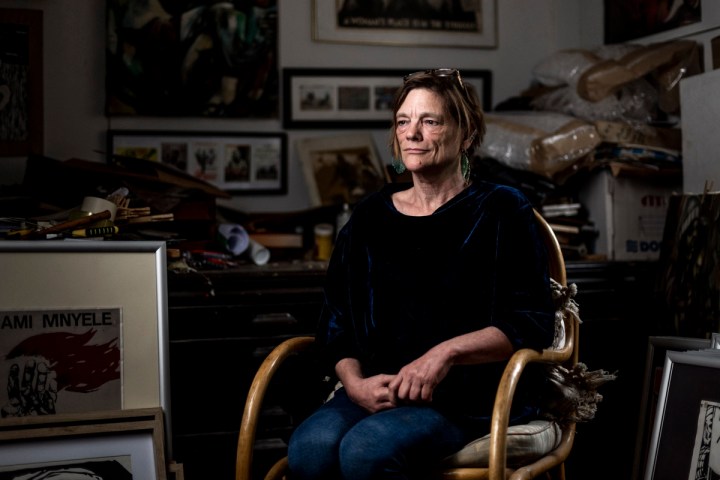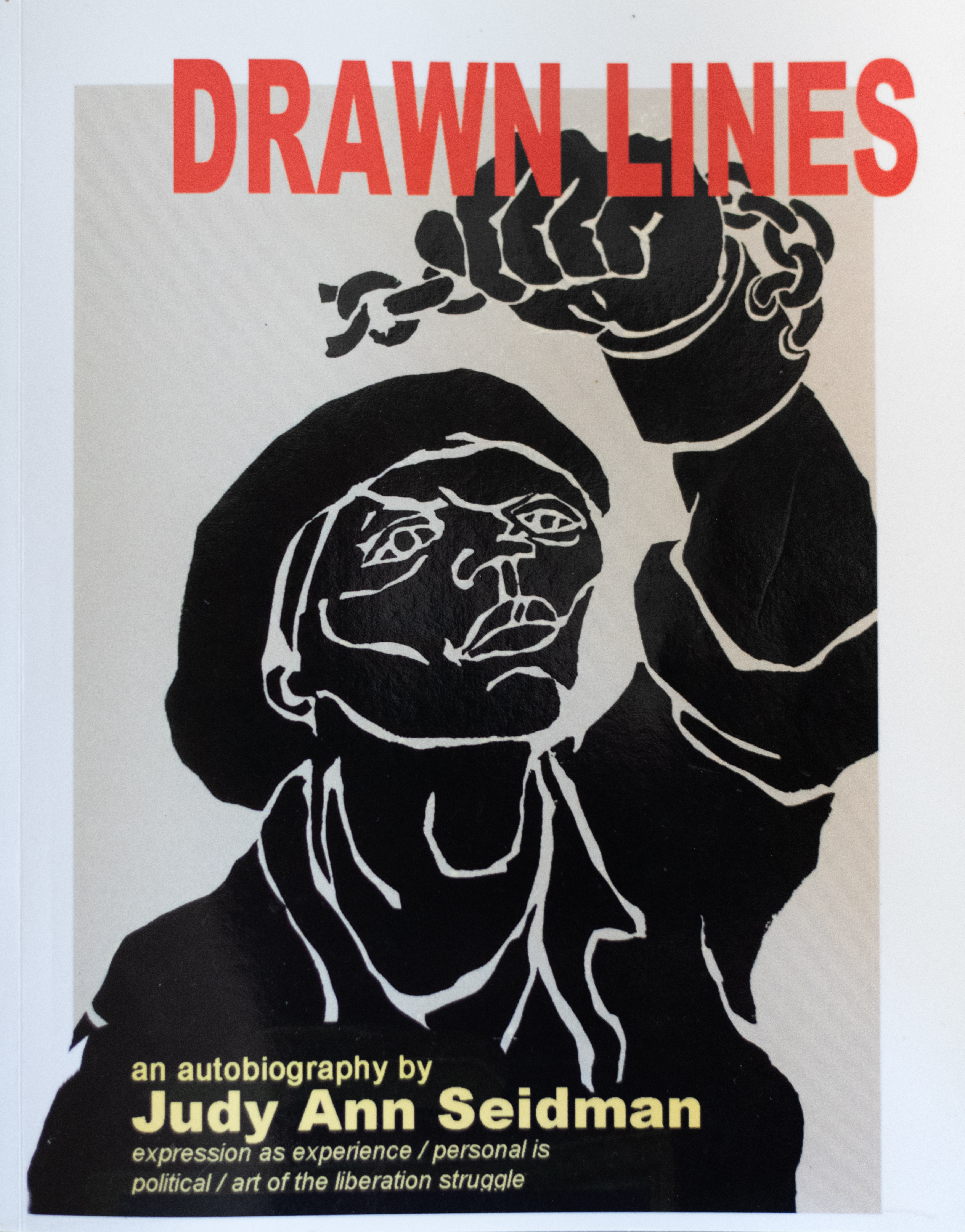MAVERICK CITIZEN
Pictures of a Revolution

For many, the name Judy Ann Seidman may not mean much. But show these same people a collection of her wonderful ‘struggle’ posters and art from the Eighties and Nineties, and it is likely that they will quickly make the link. Think the struggle for antiretroviral treatment, the anti-apartheid Struggle, the union battles, the posters to remember Struggle heroes once they died, Solomon Mahlangu... Chances are good that Seidman was the hand behind the artwork on the iconic posters. Seidman was a freedom fighter who used her phenomenal creative ability to fight the good fight.
A former Umkhonto weSizwe member, Seidman is now involved in many community and personal projects, where she teaches and shares art as a medium of self expression, allowing people to tell their own stories through art.
Seidman’s various artworks have once again entered the public consciousness via an exhibition at Museum Africa in downtown Johannesburg and the imminent launch of her autobiography in October this year.
Seidman is an American-born artist who has lived in South Africa since the early 1970s. Unknown to many, she was at the heart of the liberation Struggle. For years she smuggled messages across the border for uMkhonto weSizwe, she hosted Struggle icons such as Chris Hani in her home, before they left for exile. All of these things she did quietly, but when it came to drawing and painting the revolution, her work spoke loudly.
She comes from a lineage of phenomenal artists. Her grandmother Anita Willcox was an American artist and feminist who worked in New York as a leading illustrator through the 1920s and 1930s drawing covers for Colliers and the Saturday Evening Post.
“She became my role model, I envied her artwork and her smooth long silver hair, unbraided, falling two-thirds of the way down her back,” recalls Seidman.
Seidman’s house in Bezuidenhout Valley on the Johannesburg East Rand, could easily be mistaken for an art gallery. The walls are awash with colour, and every open space is covered in intricate art works, a mixture of posters and paintings. Most are hers but some are by her colleagues that she worked with at the Medu Art Ensemble. It was in this collective that Seidman cut her teeth as a protest artist.
Born in 1979 the artist collective called Medu Art Ensemble was the brainchild of a group of artists who came together, using their talents to create artworks that would advance the Struggle against apartheid, as well as artwork that provided a testimony to people power.
Being an artist in the late Seventies and early Eighties in South Africa was a dangerous pastime. The power of pencils and pens at that time could be equated to hand grenades and machine guns. Perhaps the two were interchangeable – to the apartheid government both were weapons of mass destruction that threatened to topple the architecture of apartheid.
For the Medu collective however, their art was a galvanising tool, it was work that told the stories of the injustices of apartheid, it was work that spoke to the oppressed masses and encouraged them to organise, mobilise and be steadfast in their efforts to fight for freedom. What is most striking about the imagery created was that it depicted women as powerful. In many of the posters created by the collective the images of women were bold and strong, challenging the idea that women were weak, and not legitimate freedom fighters who fought alongside men.

Drawn Lines. Front page of Judy Seidman’s upcoming autobiography.
The image above, which is the cover image of Seidman’s autobiography Drawn Lines was the subject of much debate. In her autobiography Seidman recounts how in its first draft the hand of the woman held a machine gun. Some of the collective argued that this imagery was too militant, others that the hand was too big – nobody would believe it was the hand of the woman. Seidman insisted it was important that the hand was depicted as bold and powerful, particularly because it was necessary to portray woman as strong. In the final conclusions it was decided that the hand would remain, but instead of a machine gun, the hand was depicted as having broken away from shackles.
For Seidman, it seems one of the strengths of Medu, was in the idea of the collective.
“The individual comes from and defines the collective; the collective drives, frames and shapes the individual, who in turn enters new or on-going or alternative collective,” she said.
It was through community and consultation that the Medu collective produced powerful artworks that advanced the liberation Struggle. While some posters and images were accredited to one name, hers, Seidman insists all of the posters were a product of team work. Seidman remembers very clearly hours of debate and consultation between members of the collective, before they finally settled on the most apt imagery.
Together, the collective created 50 posters before their headquarters were destroyed in what is known as the Gaborone raid. On 14 June 1985, the South African Defence Force raided the Medu offices in Botswana, killing 12 people. One of the people killed was Thami Mnyeli, a phenomenal artist who Seidman was particularly close to. In her biography, she says: “A serious book about Thami still needs to be written, compiling his words, ideas, insights and creative genius, holding his own writings.”
While the Medu art ensemble may have been destroyed in the Eighties, Seidman continues to keep its ideals alive, she still believes that now, as it was then “everything you do and say has to be about the Struggle”. DM


















 Become an Insider
Become an Insider